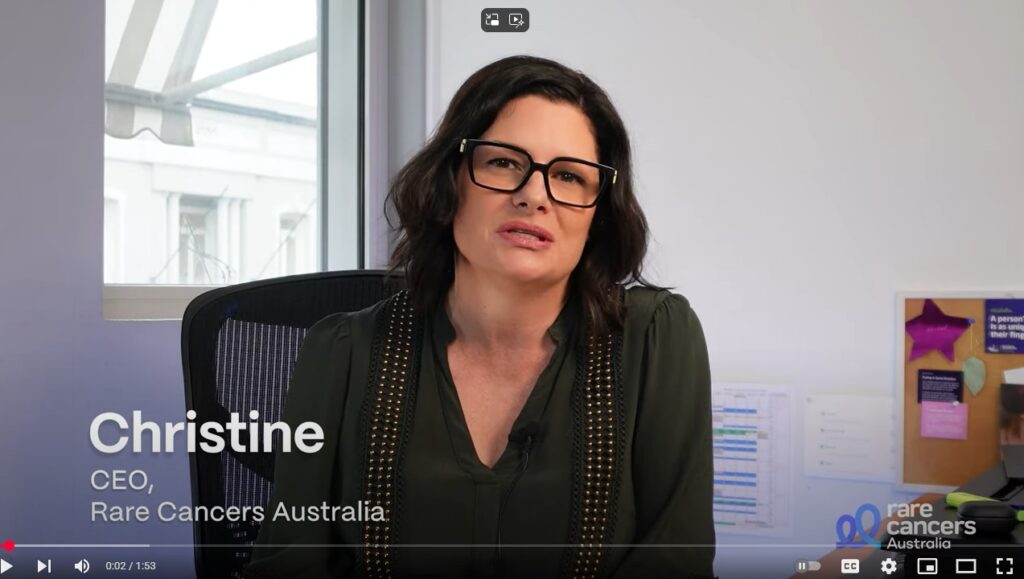By Christine Cockburn
CEO, Rare Cancers Australia, 1st May 2025
Right now, in a hospital in Australia, two people with cancera disease where abnormal cells split without control and spread to other nearby body tissue and/or organs are receiving the same medicine. One is paying $31.60 per treatment round thanks to the Pharmaceutical Benefits Scheme (PBS), the other is paying full price at over $8,000 per round.
From next year, under election commitments, the first will pay even less at $25. The second will still pay over $8,000.
Why? Because the second person’s cancer type is rare. And because it’s rare, they need to find the money to pay for it themselves or go without.
This is the reality of the “cancer lottery” in Australia. Where your chance of survival is determined by where your cancer is located, where you live, and your bank balance. While political candidates are talking about cheaper and faster access to healthcare and medicines for all, people with rare cancers are dying waiting for change.
Last week at the National Press Club Health Debate we heard important commitments from the two major parties to increase access to care for “all Australians”. More GPs, more bulk-billed appointments and a confirmation that delivering the Health Technology Assessment Review recommendations to speed up access to new treatments will be a priority.
Important changes to strengthen our system. But what we are yet to see are policies to address the well evidenced inequities in our health assessment and funding systems that leave people with rare cancers behind. Under the previous government, the ground work has been laid. This now must be more than a priority: we need immediate action.
Every day at Rare Cancers Australia, our specialist cancer navigators support people who are facing some of the toughest days in their life. Facing unthinkable decisions about whether and how to self-fund a treatment that could give them extra years with loved ones.
People like 35-year-old Natalie from Byron Bay, who lives with adrenocortical carcinomacancer arising from tissues that line organs – a rare and aggressive cancer. When diagnosed one year ago, Natalie was told she might not make it through the night. One year later, thanks to an immunotherapya treatment that uses a person's immune system to fight cancer that targets the genomic biomarker in her tumoura tissue mass that forms from groups of unhealthy cells, Natalie’s treatment is keeping her well and active, enjoying time with family and friends. But at a huge cost.
The drug, which is available on the PBS for 13 other cancer types, costs her $8000 every six weeks. She travels back and forth between her home in Byron Bay and her hospital in Brisbane, adding up over time to an enormous expense. Natalie has withdrawn her superannuation early and moved in with her mum, who sold 200 head of cattle to help with the medical bills.
Natalie won’t see financial relief from $25 prescriptions. She and thousands of others like her have been left behind.
But there is a fairer way.
Our next Government has a chance to correct the course by acting decisively and delivering true reform. A chance to catch up with scientific advances and adopt genomic-led cancer care; deliver faster, fairer access to cancer treatments through a multi-cancer funding approach; and address the unacceptable and devastating financial impact of a rare cancer.
A chance to end the bureaucratic tug-of-war, work with stakeholders and remember what is at stake here – people’s lives and livelihoods.
Natalie’s out-of-pocket costs have reached $200,000 already. When will people like Natalie and the thousands of Australians who desperately need access to medicines and tests that are available for some, but not all, get a fair go?
The solutions are there. Our next Government can make it happen, so that when they talk about access and cheaper medicines for all, they will truly mean all.
